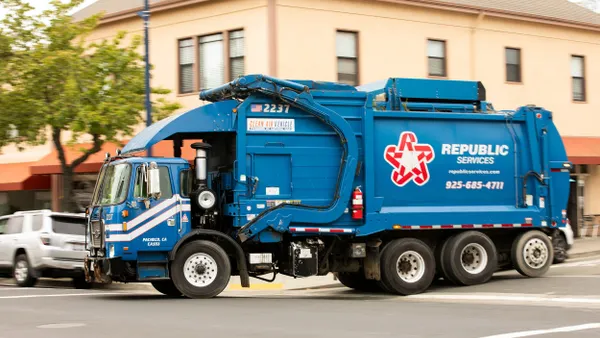Dive Brief:
- A report from the California-based R3 Consulting Group is questioning the safety risks of two longstanding disposal practices in Lane County, OR, according to The Register-Guard.
- At a transfer station in Glenwood, residents traditionally drive up to a 12-foot pit and toss their waste over the edge. Two horizontal metal cables are the only barrier to the pit and the consultants noted that residents could potentially fall in.
- Tipping practices at the county's Short Mountain Landfill were also called out. There, trucks back up to a 20-foot cliff — sometimes allowing their wheels to hang over the edge — to dump their waste. A small metal rail is the only safeguard.
Dive Insight:
In both cases, the consultants recommended dumping waste farther away from the edge of these steep drops and then pushing it over with separate equipment. A county official said this could be an issue at the landfill because frequent rain conditions make the waste hard to move. Additionally, space is tight at the transfer station, and it would be challenging to accommodate extra piles of waste amid frequent vehicle traffic.
Lane County officials could not recall any major accidents at either the transfer station or the landfill. R3 noted that operations throughout the country are shifting away from letting residents dump their waste, though this is still common at other facilities in the area. County commissioners are currently reviewing these recommendations though are unlikely to make major improvements until their budget is balanced.
Many residents still drop off their waste at transfer stations in rural areas and small towns, but the set-up can sometimes be dangerous. In recent years, residents have been struck and killed by vehicles at transfer stations in Maine and Hawaii. As the industry continues to work on improving safety for workers, it may be wise to find ways to reduce the involvement of untrained civilians.











